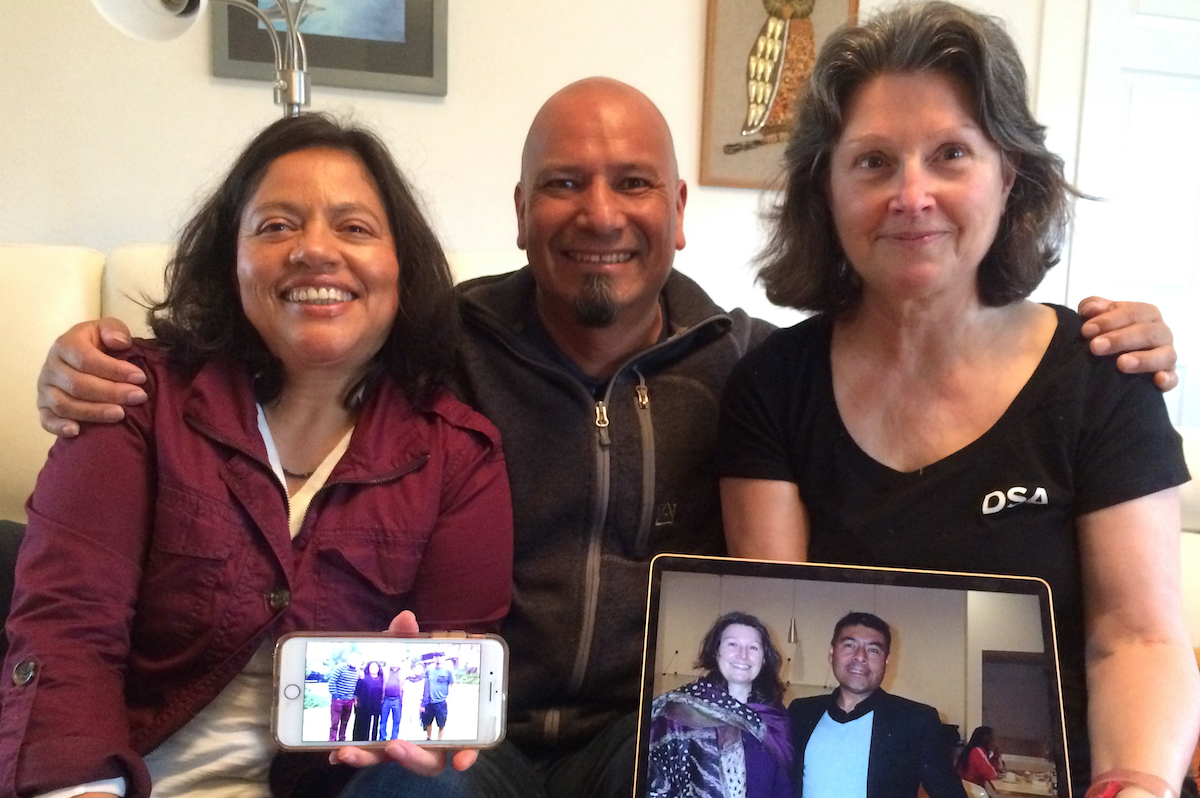
Hugo Macario, an accomplished educator, performer of Latin fusion music genres, and longtime Santa Barbara resident, died unexpectedly on May 9. Hugo’s generous and warm-hearted presence will be sorely missed.
Although I had known Hugo for a few years when he performed in Ensamble Vientos del Sur (Winds of the South Ensemble), it was only in June 2019 that Hugo and I discovered our deep, shared connection to one very tiny and specific place in Mexico: the Island of Jarácuaro.
Hugo’s family is from the Island of Járacuaro, Lake Pátzcuaro, Michoacán, part of a region with a remarkable legacy of teachers, teacher training, and vibrant musical and cultural practices. Significantly, it has been the home of P’urhépecha peoples for many centuries.
I, on the other hand, moved from the U.K. to live in Mexico in the mid-1990s, spending most of my time living on or near the Island of Jarácuaro for my research on musical practices and teaching. I played violin with an ensemble from Jarácuaro, where I got to know many musicians, dancers, and teachers. Of course, I knew of the Macario family as teachers from Jarácuaro who, like others, lived in the nearby lakeside town of Pátzcuaro.
Hugo and I only made this shared connection to the Island of Jarácuaro in June 2019. We were in conversation at UC Santa Barbara, where I have been a professor in the Department of Music since 2011. We were preparing for Hugo’s interview for the role of director of the UCSB Son Jarocho Ensemble. We had one of those exchanges that start out with general connections — “… Mexico … state of Michoacán” — and then, with each added piece of information, become a spine-tingling sense of deep correlation — “… near the city of Morelia … near the town of Pátzcuaro … one of the islands on Lake Pátzcuaro … the Island of Jarácuaro.” At that point, Hugo and I knew that we would have so much to talk about and so many possibilities for future collaborations.
Born on August 15, 1965, in Pátzcuaro, Hugo started playing Latin American musical genres at an early age, being particularly drawn to music for social justice. Following in his family’s footsteps, he trained as a teacher in the Pátzcuaro region and taught in local schools.
After moving to Santa Barbara in 1990, he continued to develop his expertise as a musician and teacher. With Jose Elizarraraz and Roberto Gallardo, Hugo formed the group Ensamble Vientos del Sur and was joined later by Robert Gutiérrez.
In fall 2019, Hugo took up the role of director of the UCSB Son Jarocho Ensemble. Hugo’s deep desire to empower others through music was ideally suited to this genre. Significantly, son jarocho music, which originates in the Veracruz region of Mexico, embodies some of the complexity of Mexican histories, encompassing Indigenous peoples, Spanish colonizers, enslaved Africans, and mestizo identities. In the U.S.A., son jarocho was popularized by Ritchie Valens’s performance of “La Bamba” and has been performed in recent decades within social justice events. An expression of son jarocho is through a fandango, where everyone gathers around a tarima — a low wooden platform — taking turns to perform footwork that provides a rhythmic percussive layer. For me, fandango seems to connect most strongly with Hugo’s commitment to inclusive teaching and social justice, embodying the idea of convivencia — being together. I was privileged to witness Hugo’s expertise in teaching UCSB students and Santa Barbara community members, creating convivencia through musical practices. Hugo was truly a skilled and generous teacher and musician who enabled every participant to feel included and valued.
Hugo’s ability to generate connections was obvious to me immediately following our spine-tingling conversation in June 2019. I already had a visit to Jarácuaro planned for June, because a dear friend was to host the celebration of Corpus Christi. Enthusiastically, Hugo said that I should therefore meet with his sister Maria on Jarácuaro. A couple of days later, Hugo and Lucia Torres, his wonderful wife, came to my house in Santa Barbara. We chatted away and even had a FaceTime call with Maria. Then, three days later, I was on the Island of Jarácuaro meeting Maria in person. While I was with Maria, Hugo phoned to check that we had managed to meet up.
After discovering our shared connection to Jarácuaro, Hugo gave me a copy of Historias que contar — Stories to Tell — a CD he created in 2015 with Jose and Robert and Ensamble Vientos del Sur. If you look at the beautiful and intricate cover, you will see Lucia’s stunning collage of photos, including Jarácuaro. And if you listen to track 10, composed by Hugo and titled simply “Jarácuaro,” you can hear Hugo’s deep sense of musical relationship to his family’s island home.
Hugo’s life was clearly lived to the fullest.
With Hugo’s passing, I have a sense of profound loss because collaborations with Hugo — exploring stories of musicians and teachers of Jarácuaro — are no longer possible. Instead, my presentations on Jarácuaro and musical practices of Mexico will always be dedicated to Hugo.
